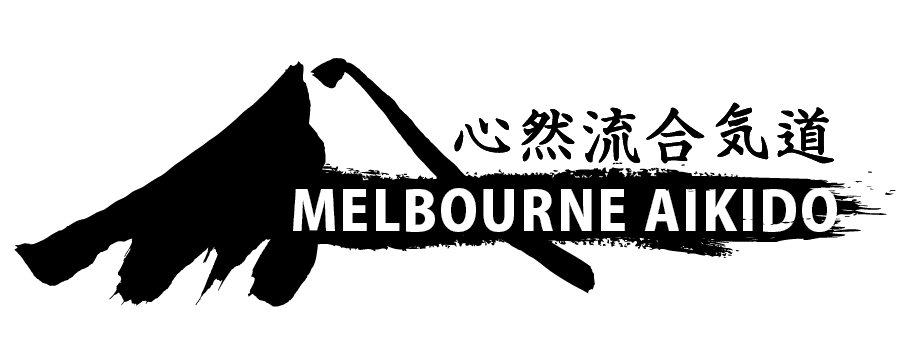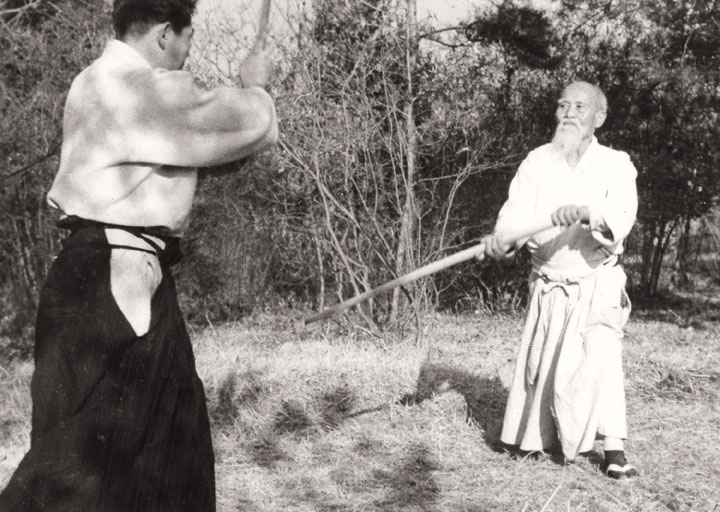To gain an understanding of what Aikido is requires a sense of the culture in which it was born. From Japan has emerged a society that formed an inseparable relationship between its people and the natural world. Its geographic isolation over hundreds of years enabled the culture to express itself with many unique traditions and art forms.
The strong seasons of Japan coupled with the natural volatility of the volcanic region has contributed to a reverence and respect for the processes and power of nature. Rather than fighting or resisting the earthquakes, tsunamis, volcanic eruption and monsoons that shape the region, the Japanese people developed a mindset of receptiveness, acceptance and appreciation for life. To live well in such extreme conditions requires one to embrace the present moment and enjoy the transient beauty of life. Tea ceremony, Ikebana and Haiku are but a few of the art forms that reflect a deep appreciation for living in the moment.
The heightened instruments of sense perception in the Japanese people facilitated subtle forms of artistic expression. Beauty is often expressed as a natural yet refined simplicity. Japanese aesthetics reveal the synergy of both form and empty space: the harmonising of opposites, while simultaneously speaking to the heart of the viewer. This Japanese heart/mind is the fertile ground from which Aikido emerged.
Morihei Ueshiba (1883-1969) is one of the most legendary Japanese figures of modern times. A deeply spiritual man, skilled in many classical Japanese Martial arts, he developed Aikido 合気道 as an expression of his spiritual enlightenment. As his consciousness expanded, the conflict inherent in Martial arts between attacker and defender was reconciled. A harmonious human being does not seek to destroy through the Martial arts, rather they accept, blend, unify and integrate through their actions with the world. For such a person no “enemy” exists for they move in harmony with the ever evolving present moment.
The harmonious techniques of Ueshiba Sensei were referred to as divine expressions – many gathered around him and enthusiastically practiced. In his teachings, Ueshiba Sensei emphasised the importance of elevating one’s consciousness. Its was at this time the extraordinary art of Aikido, a path of spiritual development through Martial arts, was born.
There is no form or style of Aikido. It is the movement of nature and its secret is deep and infinite.
Today Aikido remains a powerful tool for personal development and self realisation. The “way”, or journey, leads the practitioner to a greater understanding of the self, a more integrated way of being, and an insight into the laws of nature. Unlike most martial arts that are primarily concerned with combat and self defence, Aikido emphasises self mastery. When the self is mastered, all that one encounters is transformed.
We begin our Aikido journey as a bundle of nervous energy and tensions. We try and assert ourselves against our “opponents”. As a result, our movements are jerky and our interactions involve much resistance and insecurity. Through the study of techniques and practices that reveal the principles of harmony, the skill of reconciling interactions in one’s daily life is learned. The practice reveals the true opponent: ones limited concept of self. In this way, Aikido is one of the most practical martial arts you can learn. Rather than focusing each class on aggression and conflict for a possible self defence situation in the future, practicing harmony enables us to lead a more joyful, integrated and peaceful life each and every day. When harmony and joy is coming from our system, we naturally move towards our ultimate potential.


